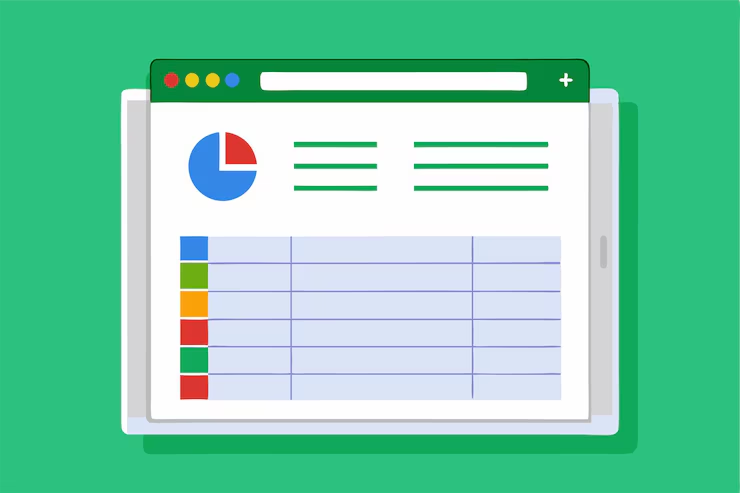Google Sheets is a powerful tool that makes organizing data simple and accessible. Whether you’re tracking expenses, creating a project plan, or analyzing survey results, tables are essential. In this guide, you’ll learn quick and easy tips on how to make a table in Google Sheets efficiently and effectively.
Why Use Tables in Google Sheets?
Tables help you display information clearly. They allow for better readability and easier data analysis. More importantly, they support functions and formatting tools that improve productivity. Creating tables in Google Sheets is also an excellent way to share structured data with teammates.
Getting Started with Google Sheets
Before jumping into the process, ensure you have a Google account. Once you’re logged in:
- Visit Google Sheets.
- Click on the Blank spreadsheet to start from scratch.
- Name your spreadsheet for easy identification.
Step-by-Step Instructions on How to Make a Table in Google Sheets
Step 1: Enter Your Data
Start by entering your data in rows and columns. Keep the first row reserved for headers like “Name,” “Date,” or “Amount.”
Step 2: Highlight the Data
Click and drag to select all the cells that include your data and headers. This prepares your range for formatting.
Step 3: Apply Borders
To make the data visually appealing:
- With the cells selected, click on the Borders icon in the toolbar.
- Choose All Borders to create a grid-like structure.
This gives your data the appearance of a table instantly.
Step 4: Use Bold Headers
Make your headers stand out:
- Select the top row.
- Click the Bold (B) icon in the toolbar.
This simple step improves readability immediately.
Step 5: Apply Alternating Colors
Alternating colors make your table easier to read:
- Select your entire data range again.
- Go to Format > Alternating colors.
- Choose a color style or customize your own.
Click Done, and your table will now look much more professional.

Advanced Tips for Better Tables
Now that you’ve got the basics, let’s dive into advanced features to make your table more useful.
Use Filters
Filters help you sort and find information faster:
- Select your table.
- Click on Data > Create a filter.
- Use the dropdown arrows next to each header to filter or sort the data.
Freeze Headers
When working with large datasets:
- Go to View > Freeze > 1 row.
- This keeps your headers visible as you scroll.
Conditional Formatting
Highlight important information automatically:
- Select the range.
- Go to Format > Conditional formatting.
- Set rules (e.g., cells greater than 100 turn red).
Use Data Validation
Limit what users can enter:
- Select the cells.
- Go to Data > Data validation.
- Set criteria such as drop-down lists or number ranges.
Customizing Your Table Design
Change Font and Size
To make your table more readable:
- Select the entire table.
- Choose a readable font like Arial or Roboto.
- Adjust the font size to 11 or 12 points.
Align Text Properly
Proper alignment improves clarity:
- Use Center alignment for headers.
- Use Left alignment for text.
- Use Right alignment for numbers.
Wrap Text in Cells
If your data is getting cut off:
- Select your cells.
- Click Format > Wrapping > Wrap.
This keeps all content visible without changing column width.
How to Make a Table in Google Sheets for Specific Uses
Budget Tracking Table
- Use columns like Category, Expense, Date, and Amount.
- Apply conditional formatting to highlight expenses over budget.
Task Management Table
- Include columns such as Task, Assigned To, Due Date, and Status.
- Use drop-down lists for the Status column.
Inventory Table
- Track items, quantity, supplier, and reorder status.
- Use formulas to alert when stock is low.
Formulas That Enhance Tables
Formulas bring your tables to life. Here are a few helpful ones:
- SUM(): Totals up a column of numbers.
- AVERAGE(): Finds the mean value.
- COUNT(): Counts how many entries exist.
- IF(): Returns values based on conditions.
Example:
=IF(B2>100, "Over Budget", "Within Budget")This formula checks if a value in B2 is over 100 and labels it accordingly.
Keyboard Shortcuts for Speed
Want to speed things up? Try these:
- Ctrl + B: Bold
- Ctrl + Shift + L: Create filter
- Ctrl + Enter: Fill selected cells
- Ctrl + Z: Undo
Using shortcuts makes table creation faster and more efficient.
Sharing and Collaborating on Tables
One of the strengths of Google Sheets is real-time collaboration:
- Click the Share button.
- Add email addresses or create a shareable link.
- Set permissions (Viewer, Commenter, Editor).
Collaborators can then work with you on the same table without emailing files back and forth.
Exporting and Printing Your Table
Export as PDF
- Go to File > Download > PDF Document.
- Choose layout and scale options.
Print Your Table
- Click File > Print.
- Use Print Settings to adjust margins, orientation, and scale.
Troubleshooting Common Issues
Table Formatting Disappears
- Reapply borders and alternating colors.
Headers Not Visible When Scrolling
- Use the Freeze option under the View menu.
Data Not Sorting Correctly
- Make sure all cells are filled in and formatted consistently.
Final Thoughts on How to Make a Table in Google Sheets
Learning how to make a table in Google Sheets doesn’t require technical skills. By following these simple and advanced tips, you’ll create clear, functional tables for any purpose. Remember to explore features like filters, conditional formatting, and formulas to elevate your spreadsheets.
Creating great tables not only organizes your data but also helps you and your team make better decisions. Start practicing today, and you’ll be a Google Sheets pro in no time!


